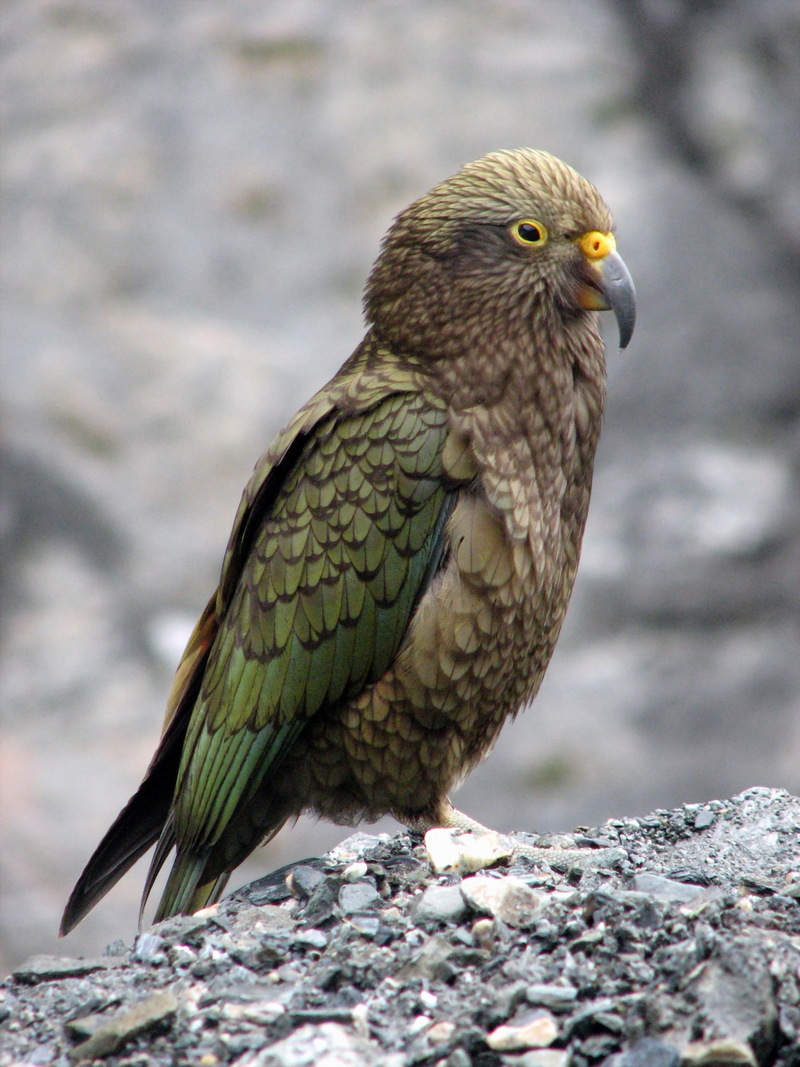Kea (Nestor notabilis) - Wiki Kea
From Wikipedia, the free encyclopedia
[Photo] New Zealand's mountain parrot, the Kea (Nestor notabilis), on some rubble on the Franz Josef Glacier. Date 2006-11-21. Author Markus Koljonen (Dilaudid) http://commons.wikimedia.org/wiki/User:Dilaudid
The Kea (Nestor notabilis) is a highly unusual species of parrot found in forested and alpine regions of the South Island of New Zealand. The Kea is one of the few recorded alpine parrots in the world, and includes carrion in a diet consisting mainly of roots, leaves, berries, nectar and insects. Now uncommon, the Kea was once killed for bounty as it preyed on livestock, especially sheep, only receiving full protection in 1986.
Description
Kea are omnivorous crow-sized birds, 46 cm length and weighing around 700-1000g. They have olive green plumage with dark-edged feathers, and a blue-green tail. The underwings are scarlet with yellow stripes, while the legs are grey. The ceres, bill and eyes are dark grey. Juvenile birds (age 0-3) have yellow ceres, eye-rings and beak parts. Fledglings also have a lighter-coloured crown. They are thought to live to an age of 50 years but there is no published data on maximum age.
The main call is a loud Kee-ah, mainly voiced in flight. It has some other softer calls.
Classification
The genus Nestor contains three species: The K??k?? (Nestor meridionalis), the Kea (N. notabilis), and the extinct Norfolk Island K??k?? (N. productus). All three are thought to stem from a 'proto-K??k??', dwelling in the forests of New Zealand 15 million years ago. The closest relative is most likely the K??k??p?? (Strigops habroptilus).
A 2005 sex chromosome spindlin DNA sequence study suggests that the Nestor species, and the K??k??p?? in its own genus, comprise an ancient group that split off from all other Psittacidae before their radiation, but fossil evidence seems to contradict this; given the violent geological history of New Zealand (see, for example, Taupo Volcanic Zone), other explanations such as episodes of genetic drift seem better supported by evidence.
...
http://en.wikipedia.org/wiki/Kea
| The text in this page is based on the copyrighted Wikipedia article shown in above URL. It is used under the GNU Free Documentation License. You may redistribute it, verbatim or modified, providing that you comply with the terms of the GFDL. |
